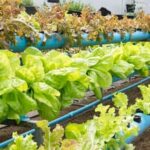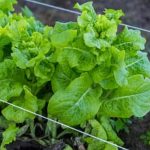School Vegetable Gardens Australia play a crucial role in educating the future generation about food cultivation, nutrition, and sustainability practices. These gardens provide a unique learning environment that enhances students’ understanding of where their food comes from and promotes healthier eating habits. Additionally, they foster a sense of responsibility and teamwork among students while encouraging environmental awareness and sustainable practices.
By incorporating school vegetable gardens into the curriculum, students can actively participate in hands-on activities that teach them about plant life cycles, ecosystems, and natural resources. These gardens also offer opportunities for developing critical thinking, problem-solving, and practical skills through gardening tasks. Through this integration, students not only gain knowledge but also develop a deeper appreciation for the environment and the importance of sustainable practices.
Starting a school vegetable garden requires securing support from school administration and parents, selecting a suitable location, obtaining necessary permits, and planning the layout. It is also crucial to choose appropriate vegetable varieties for different climates in Australia to ensure successful growth. Despite challenges such as limited space and budget constraints, managing pests without harmful chemicals, addressing seasonal variations and extreme weather conditions, with proper planning and strategies these challenges can be overcome.
The success stories of inspiring school vegetable gardens highlight the positive impact on students’ well-being, academic performance, and community involvement. Collaborations with local farmers, nutritionists, chefs, parent volunteers as well as organizing farm-to-table programs gives an opportunity for community engagement and promoting healthy eating habits.
Benefits of Having School Vegetable Gardens in Australia
Enhancing student’s understanding of food cultivation and nutrition
One of the key benefits of having school vegetable gardens in Australia is the opportunity it provides for students to gain a deeper understanding of food cultivation and nutrition. By actively participating in the process of growing their own vegetables, students learn about different plant species, soil health, composting, and other essential aspects of gardening. This hands-on experience helps them appreciate the effort that goes into producing food and instills a sense of gratitude for natural resources.
Moreover, school vegetable gardens allow students to make connections between what they grow and what they eat. They learn about the nutritional value of fresh produce, develop an appreciation for healthy eating habits, and have a greater likelihood of making healthier food choices. The practical knowledge gained from tending to a garden can also empower students to take responsibility for their own well-being by making informed decisions about their dietary intake.
Promoting healthier eating habits and reducing obesity rates
With childhood obesity rates on the rise in Australia, school vegetable gardens offer a practical solution to promote healthier eating habits among students. When children actively participate in growing vegetables, they are more likely to consume them as part of their regular diet. This promotes a preference for fresh fruits and vegetables over processed snacks or sugary beverages.
By incorporating garden-to-table experiences into the curriculum, schools can create opportunities for children to taste and prepare the vegetables they have grown. This not only exposes them to new tastes but also encourages experimentation with cooking methods and recipes that incorporate nutritious produce. Through these experiences, children develop a deeper connection with their food and are more likely to choose wholesome options in the future.
Fostering a sense of responsibility and teamwork among students
School vegetable gardens provide an ideal environment for fostering a sense of responsibility and teamwork among students. As they work together towards achieving common goals like planting seeds, weeding, and harvesting, they learn the importance of collaboration and cooperation. This sense of interdependence enhances their social skills, empathy, and ability to work in a team.
Furthermore, when students are given ownership of the garden and entrusted with its care, they develop a strong sense of responsibility. They learn firsthand the consequences of neglect or poor decision-making on the health and well-being of their plants. This not only instills a sense of accountability but also helps cultivate positive character traits such as patience, problem-solving skills, and perseverance.
How to Start a School Vegetable Garden in Australia
Starting a school vegetable garden in Australia requires careful planning and preparation. By following these steps, schools can successfully establish and maintain a vibrant garden that enriches the learning experience of students while promoting healthy eating habits and environmental awareness.
- Securing support from school administration and parents: The first step in starting a school vegetable garden is to gain support from the school administration and parents. Present the benefits of having a garden, such as enhancing students’ understanding of food cultivation and nutrition, fostering teamwork, and promoting sustainability practices. Create a proposal outlining the goals, resources needed, and educational opportunities the garden will provide.
- Selecting a suitable location and obtaining necessary permits: Choose a location for the garden that receives adequate sunlight and has access to water sources. Conduct soil tests to assess its fertility and suitability for growing vegetables. Obtain any necessary permits or permissions from local authorities or landowners before proceeding with the project.
- Planning and designing the garden layout: Designing an efficient layout for the vegetable garden is crucial for its success. Consider factors such as space availability, accessibility, and aesthetic appeal when planning the layout. Divide the garden into separate beds or plots to accommodate different vegetables or classes if space allows. Use raised beds or vertical gardening techniques to maximize plant growth in limited spaces.
- Choosing appropriate vegetable varieties for different climates in Australia: Selecting suitable vegetable varieties that thrive in different Australian climates is essential for successful gardening. Consider factors such as temperature range, rainfall patterns, and sunlight availability when choosing crops. Consult local agricultural experts or community gardens for advice on which vegetables are best suited for specific regions within Australia.
To ensure success with your school vegetable garden in Australia, it is important to have a well-rounded understanding of what needs to be done before actually starting your project.
– Securing support from school administration.
– Gaining parental support.
– Finding an optimal location.
– Obtaining necessary permits.
– Planning the layout.
– Choosing suitable vegetable varieties.
By following these steps, schools can establish a thriving garden that has both educational and environmental benefits for their students.
In the next section, we will explore the curriculum integration and educational opportunities that school vegetable gardens in Australia offer.
Curriculum Integration and Educational Opportunities in School Vegetable Gardens Australia
Incorporating garden-related activities and lessons into science, math, and environmental studies
One of the key benefits of school vegetable gardens in Australia is the opportunity for curriculum integration and the abundance of educational opportunities they offer. By incorporating garden-related activities and lessons into subjects like science, math, and environmental studies, students can deepen their understanding of various academic concepts while also developing important life skills.
In science classes, students can learn about plant life cycles, photosynthesis, and the role of different organisms in an ecosystem. They can observe firsthand how plants grow from seeds to mature plants, take measurements to track growth rates, and conduct experiments to investigate factors affecting plant growth. This hands-on learning experience not only strengthens their understanding of scientific principles but also instills a sense of wonder and curiosity about the natural world.
Furthermore, math skills can be honed through various garden-related tasks. Students can practice measuring distances between plants or calculate the area needed for planting different crops. They can also analyze data collected from the garden to interpret trends or create graphs that illustrate growth patterns over time. These mathematical concepts are brought to life through real-world application, making them more engaging and meaningful for students.
Developing critical thinking, problem-solving, and practical skills through gardening tasks
School vegetable gardens provide an ideal setting for students to develop critical thinking, problem-solving, and practical skills. As they face challenges in maintaining their gardens such as pest control or soil management issues, students are encouraged to think critically and come up with creative solutions.
For instance, when dealing with pests and diseases without harmful chemicals in an organic garden setting, students may need to research alternative methods such as companion planting or natural pest deterrents. This requires them to gather information from reliable sources, evaluate different strategies based on their effectiveness and sustainability, and make informed decisions.
Moreover, gardening tasks like preparing the soil or designing irrigation systems require students to apply practical skills. They learn how to use hand tools safely, understand the importance of proper watering techniques, and implement crop rotation strategies for maintaining soil fertility. These hands-on activities not only equip students with practical gardening knowledge but also promote a sense of responsibility and self-reliance.
Providing hands-on learning experiences about plant life cycles, ecosystems, and natural resources
School vegetable gardens offer unique opportunities for students to gain firsthand experience and deepen their understanding of plant life cycles, ecosystems, and natural resources. Through observation and participation in garden-related tasks, students can witness the interconnectedness of various elements within an ecosystem.
For example, they can observe how pollinators like bees or butterflies play a crucial role in the reproduction of flowering plants. They can also learn about the concept of food webs by examining different organisms present in the garden, such as beneficial insects that act as natural pest controllers or decomposers that break down organic matter into nutrient-rich compost.
Furthermore, students can develop a greater appreciation for natural resources like water and soil through their involvement in garden maintenance. They learn to conserve water by using efficient irrigation methods or rainwater harvesting systems. They also witness the importance of nutrient-rich soil for healthy plant growth and discover ways to improve soil fertility through composting or adding organic amendments.
By engaging with these real-life examples in the school vegetable garden, students not only gain knowledge about essential ecological concepts but also develop a sense of environmental stewardship and the importance of sustainable practices.
Overcoming Challenges in School Vegetable Gardens Australia
One of the key aspects of successfully implementing and maintaining school vegetable gardens in Australia is overcoming various challenges that may arise. Despite the numerous benefits that these gardens offer, there are several obstacles that schools may face. It is essential to address these challenges effectively to ensure the long-term success and sustainability of school vegetable gardens.
- Dealing with limited space and budget constraints: Many schools struggle with limited gardening space due to urban environments or lack of suitable outdoor areas. However, creative solutions can be implemented to make the most of available space, such as vertical gardening, container gardening, or even indoor hydroponics systems.
Additionally, securing funding for initial setup costs and ongoing maintenance can be a hurdle for some schools. To overcome this challenge, schools can explore seeking grants from local community organizations or partnering with sponsors who support environmental education initiatives. - Managing pests and diseases without harmful chemicals: Dealing with pests and diseases is an inevitable challenge in any garden setting, but it becomes even more critical when avoiding the use of harmful chemicals for the sake of student safety and environmental impact. Integrated Pest Management (IPM) techniques can be employed, such as introducing beneficial insects or implementing physical barriers like netting to protect crops. Crop rotation and companion planting methods can also help mitigate pest problems naturally.
- Addressing seasonal variations and extreme weather conditions: Australia’s diverse climate poses a unique challenge for school vegetable gardens as different regions experience varying weather patterns throughout the year. Schools must carefully plan their garden calendar to accommodate season-appropriate vegetables for optimum growth and yield. Implementing protective structures like greenhouses or shade covers can also provide some control over extreme conditions such as heatwaves or heavy rainfall.
- Creating sustainable irrigation and composting systems: Water scarcity is a significant concern in many parts of Australia; therefore, optimizing water usage is crucial in school vegetable gardens. Installing efficient irrigation systems such as drip irrigation can help conserve water while ensuring plants receive adequate moisture. Moreover, implementing composting systems within the garden can boost soil fertility and reduce waste, creating a closed-loop system that promotes sustainability.
By tackling these challenges head-on, schools can overcome the obstacles that may arise in their vegetable garden initiatives. With careful planning, creative solutions, and community support, school vegetable gardens in Australia can thrive and provide valuable learning experiences for students while contributing to healthier eating habits and environmental stewardship.
Success Stories
One of the most important factors in the success of school vegetable gardens in Australia is the dedication and creativity of the schools involved. Many schools have implemented innovative approaches and unique initiatives to make their gardens thrive and have a positive impact on their students, academic performance, and community involvement.
One inspiring success story is from St. Mary’s Primary School in Sydney, which has transformed a small patch of unused land into a flourishing vegetable garden. The school worked closely with parents, volunteers, and local farmers to design and maintain the garden.
They incorporated garden-related activities into various subjects such as science and math, allowing students to apply what they learned in the classroom to real-life situations. The students not only developed a better understanding of food cultivation but also became more environmentally aware and knowledgeable about healthy eating habits.
Another successful example comes from Warrnambool College in Victoria. The school’s vegetable garden program expanded beyond its initial purpose of providing fresh produce for the school canteen. Students were actively involved in every step of the process: from planning the layout to harvesting and cooking meals using ingredients grown in the garden. This comprehensive approach not only gave students practical skills but also fostered a sense of responsibility and teamwork among them.
In South Australia, Craigburn Primary School has set up an impressive aquaponics system for their vegetable garden. In this system, fish waste is used as fertilizer for plants while plants naturally filter and clean the water for the fish. This innovative approach not only saves water but also provides an excellent learning opportunity for students about sustainable practices.
These success stories demonstrate that school vegetable gardens in Australia are more than just patches of soil; they are powerful educational tools that enrich students’ lives on multiple levels. By showcasing these examples, other schools can be inspired to take up similar initiatives, benefitting their students and communities as well.
| School | Location | Unique Aspect |
|---|---|---|
| St. Mary’s Primary School | Sydney, New South Wales | Involvement of parents, volunteers, and local farmers |
| Warrnambool College | Warrnambool, Victoria | Diverse curriculum integration and comprehensive student involvement |
| Craigburn Primary School | South Australia | Aquaponics system for sustainable practices and water conservation |
Collaboration and Community Engagement in School Vegetable Gardens Australia
Collaboration and community engagement play a vital role in the success of school vegetable gardens in Australia. By involving various stakeholders, such as local farmers, nutritionists, chefs, parents, volunteers, and community organizations, these gardens can become dynamic learning spaces that promote not only healthy eating but also sustainable food systems. This section will explore the importance of collaboration and community engagement in school vegetable gardens in Australia and provide examples of initiatives that schools can implement to foster community involvement.
Establishing partnerships with local farmers, nutritionists, and chefs can enhance the educational value of school vegetable gardens by providing students with expert knowledge and practical skills related to plant cultivation and nutrition. Local farmers can share their expertise on organic farming methods and introduce students to different varieties of vegetables grown in the region.
Nutritionists can conduct workshops on healthy eating habits and help students understand how the vegetables they grow contribute to a balanced diet. Chefs can teach students about cooking techniques using garden-fresh produce, inspiring them to appreciate the flavors of freshly harvested vegetables.
Involving parents, volunteers, and community organizations in garden maintenance and events creates a sense of ownership among the wider community. Parents can contribute their time or resources for garden upkeep or participate in gardening workshops alongside their children. Volunteers from the local community or organizations can assist with tasks such as weeding, watering, or pest control. By working collaboratively with these stakeholders, schools can strengthen social bonds within communities while also ensuring continuous support for the garden’s maintenance.
To further engage the community and promote local food systems, schools can organize farm-to-table programs, farmers’ markets, or cooking workshops that feature produce from their school vegetable gardens. Farm-to-table programs allow students to see the full cycle of food production by taking part in harvesting vegetables from their gardens and incorporating them into meals prepared onsite.
Farmers’ markets provide an opportunity for schools to showcase their fresh produce and create awareness of the benefits of locally grown food. Cooking workshops can teach students and their families how to prepare simple and healthy meals using vegetables from the garden, emphasizing the importance of nutritious eating habits.
Collaboration and community engagement in school vegetable gardens foster a sense of belonging, health and nutrition knowledge, and sustainable practices within communities. By involving various stakeholders from both within and outside the school, these gardens become powerful educational tools that promote healthy eating habits, environmental awareness, and community connections.
| Benefits of Collaboration and Community Engagement | Examples of Initiatives |
|---|---|
| Enhances educational value by providing expert knowledge on plant cultivation and nutrition | – Partnerships with local farmers, nutritionists, and chefs – Workshops on organic farming methods and cooking techniques |
| Fosters a sense of ownership within the wider community | – Involving parents in garden maintenance and workshops – Volunteers assisting with gardening tasks. – Community organizations supporting garden events |
| Promotes local food systems | – Farm-to-table programs showcasing garden produce – Farmers’ markets featuring locally grown food. – Cooking workshops highlighting vegetables from the garden |
Maintenance and Sustainability Tips for School Vegetable Gardens Australia
Maintaining and ensuring the sustainability of school vegetable gardens in Australia is crucial to their success. By following some key tips and strategies, schools can make sure that their gardens thrive and continue to provide educational opportunities for students for years to come.
One important aspect of maintaining a school vegetable garden is proper soil preparation and fertilization. Before planting, it is essential to test the soil to determine its nutrient content. This will help identify any deficiencies or imbalances that need to be addressed. Schools can then amend the soil accordingly by adding organic matter, such as compost or manure, to improve its fertility. Regularly replenishing nutrients through organic fertilizers during the growing season can further enhance plant health and productivity.
Proper watering techniques are also vital for the success of school vegetable gardens. Adequate watering ensures that plants receive enough moisture without becoming waterlogged or stressed. It is beneficial to establish a regular watering schedule and monitor soil moisture levels regularly. Mulching can also help conserve water by reducing evaporation and suppressing weed growth.
Implementing crop rotation strategies is another important aspect of maintaining a sustainable school vegetable garden. Crop rotation involves changing the types of vegetables planted in each bed or plot from one season to another. This practice helps prevent the build-up of pests and diseases in the soil, as different crops have varying nutrient needs and attract different pests. By rotating crops, schools can maintain healthier soils and reduce the reliance on chemical pesticides.
Overall, long-term maintenance plans are essential for sustaining school vegetable gardens in Australia. These plans should include regular monitoring for pests and diseases, timely weed management, proper pruning, and regular harvests to encourage continuous production. By incorporating these maintenance practices into their gardening routines, schools can create thriving vegetable gardens that serve as valuable educational resources for students while promoting a sustainable approach to food cultivation.
By implementing these maintenance and sustainability tips, school vegetable gardens in Australia can continue making a positive impact on students’ education, health, and environmental awareness. Schools that prioritize the long-term maintenance and sustainability of their gardens ensure that future generations can benefit from these valuable educational resources.
Conclusion
In conclusion, school vegetable gardens in Australia play a vital role in promoting nutrition education, fostering environmental awareness, and enhancing students’ overall well-being. The benefits of these gardens are numerous, ranging from developing a deeper understanding of food cultivation to encouraging healthier eating habits and teamwork among students. By integrating garden-related activities into the curriculum, schools can provide valuable hands-on learning experiences that enhance critical thinking and problem-solving skills.
Starting a school vegetable garden requires careful planning and collaboration with school administration, parents, and community members. It is important to secure support and obtain necessary permits while selecting a suitable location for the garden. Additionally, choosing appropriate vegetable varieties for different climates in Australia is crucial for successful cultivation.
Although there may be challenges such as limited space and budget constraints, pests and diseases, seasonal variations, and extreme weather conditions, these obstacles can be overcome by implementing sustainable irrigation systems, composting practices, organic pest control methods, and proper maintenance plans.
The future of school vegetable gardens in Australia looks promising as more schools recognize the positive impact on student well-being, academic performance, and community involvement. By collaborating with local farmers, nutritionists, chefs, parents, volunteers, and community organizations, schools can create farm-to-table programs, farmers’ markets,and cooking workshops that promote local food and healthy eating.
Overall,school vegetable gardens have the potential to transform educational experiences by providing a meaningful connection to nature and instilling lifelong lessons of sustainability. With continued support from school communities and stakeholders,the future of school vegetable gardens in Australia holds great potential for creating healthier individuals,promoting environmental stewardship,and cultivating a stronger sense of community.

If you’re looking to get into vegetable gardening, or are just looking for some tips on how to make your current garden better, then you’ve come to the right place! My name is Ethel and I have been gardening for years. In this blog, I’m going to share with you some of my best tips on how to create a successful vegetable garden.





